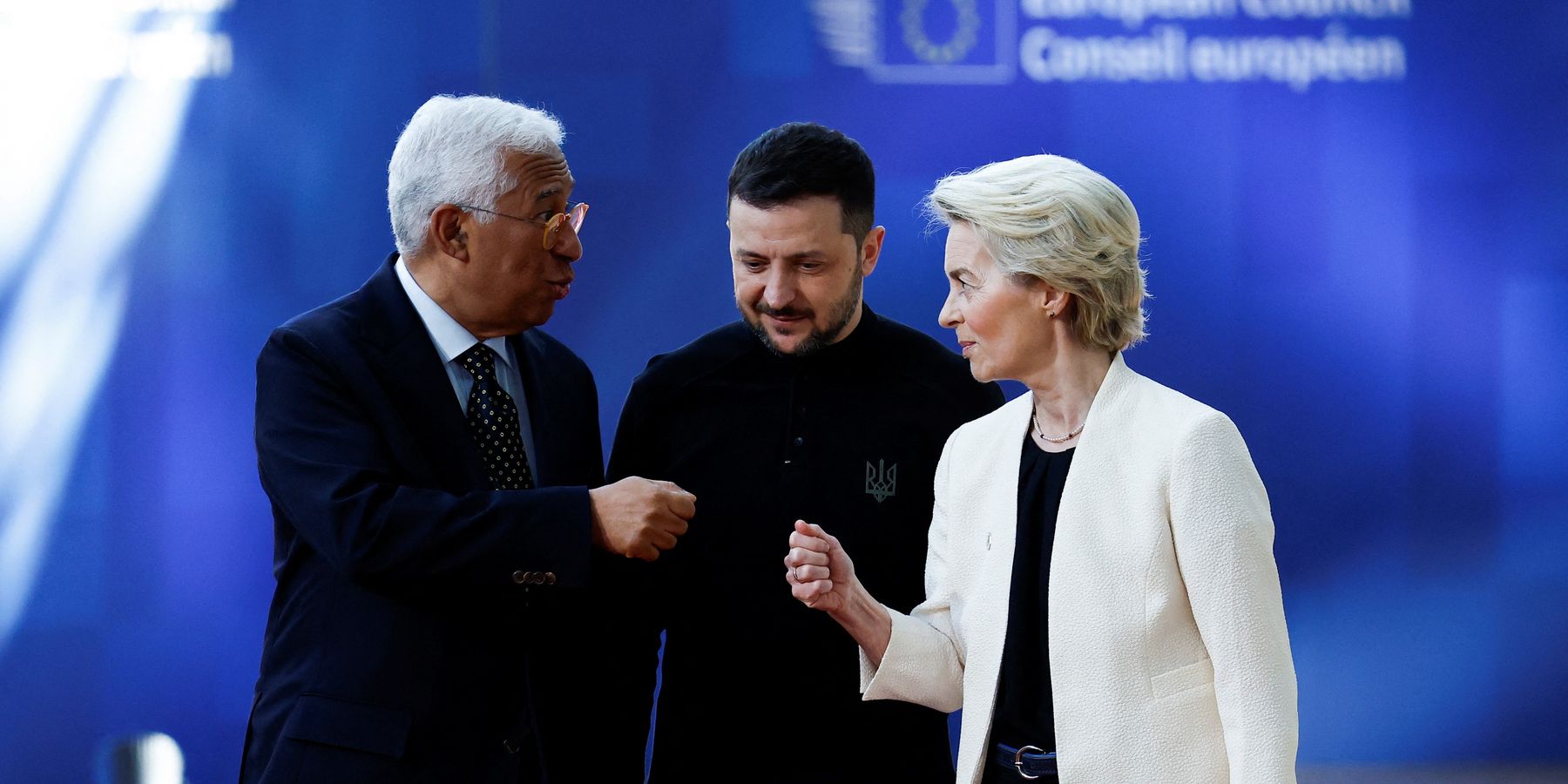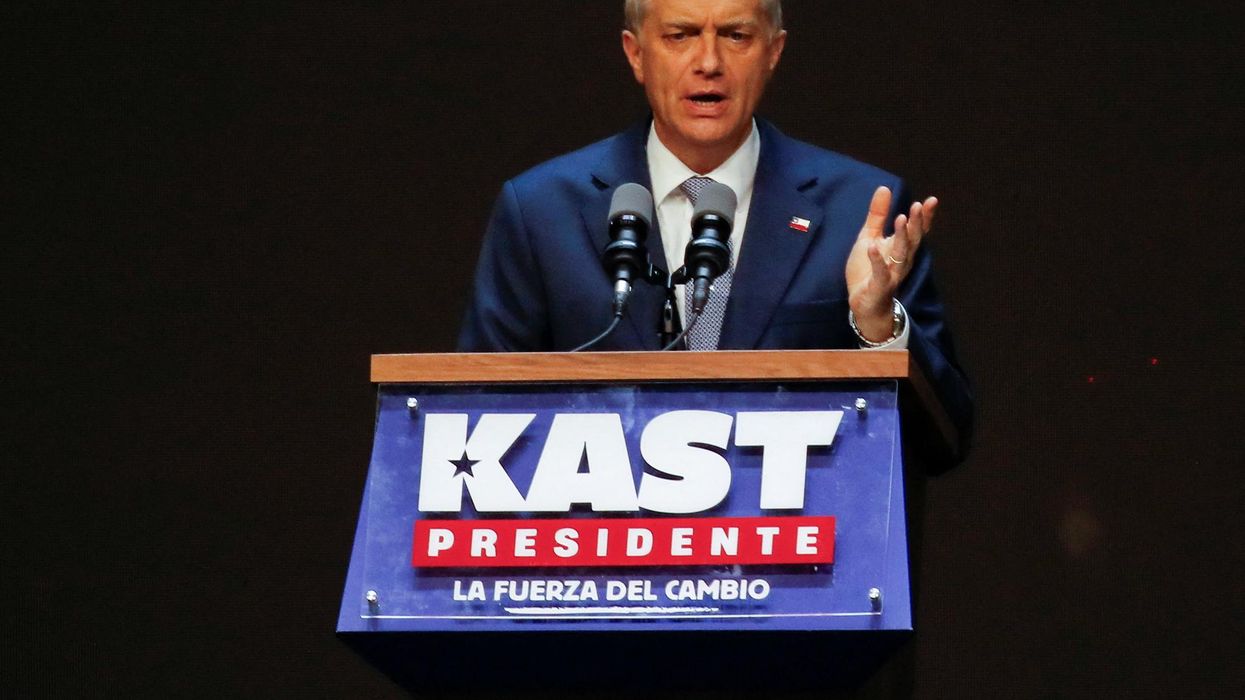The Trump administration's decision to first host direct talks with Russia in February has left Ukraine and its European backers wondering how long they will be left on the sidelines. Brussels, particularly, is trying to put on a unified front to promote its interests in Ukraine’s future.
But a flurry of statements and summits over the last few weeks shows that the EU, and Europe more generally, may be less “unified” on the subject than they had initially hoped to convey.
The inconclusive summit in London last week, which took place after the recent Trump-Zelensky spat in the White House, was followed by an emergency meeting of the EU in Brussels. Prior to that conclave, European leaders did their best to up the stakes. French President Emmanuel Macron darkly warned about the Russian threat not only to Ukraine, but also to France and Europe, in a dramatic TV address to the nation.
Meanwhile, Polish Prime Minister Donald Tusk vowed to win an arms race against Russia and predicted its “defeat,” much like the one suffered by the Soviet Union at the end of the Cold War. Other European leaders issued like-minded statements.
Despite this rhetorical escalation, however, the summit in Brussels exposed the cracks in the European facade of unity. Indeed, the bloc failed to agree on a common position due to Hungary’s veto. That did not come as a surprise, as Hungarian Prime Minister Viktor Orban has long advocated for a negotiated end to the war in Ukraine. He has forged close ties with President Donald Trump on this issue and on others.
Emboldened by the new U.S. position, Orban called on EU Council President Antonio Costa, the former prime minister of Portugal, to launch EU diplomatic talks with Moscow. Orban shared his conviction with Costa that “the EU — following the example of the U.S. — should enter into direct discussions with Russia on a ceasefire and a sustainable peace in Ukraine.”
Just days before the summit, U.S. Secretary of State Marco Rubio met with his Hungarian counterpart Peter Szijjarto to emphasize the two countries’ “commitment to ending the war in Ukraine.” That is a meaningful step for Rubio who, just days earlier, canceled a scheduled meeting with Kaja Kallas, the EU High Representative for Foreign Affairs and Security Policy, at the last minute. An unbridled Russia hawk, Kallas has repeatedly riled Trump administration officials with accusations of “appeasement” of Putin.
Speaking to the Washington Examiner after the meeting with Rubio, Szijjarto made it clear that on Ukraine, Budapest sees eye to eye with Washington, not Brussels.
Another noted representative of the European “anti-war party,” Slovak Prime Minister Robert Fico similarly decried the European Commission President Ursula Von der Leyen’s “peace through strength” strategy as “unrealistic,” positing that it serves “as a justification for continuing the war in Ukraine.” Echoing Trump’s line, Fico proposed to include “the necessity of an immediate ceasefire, regardless of the moment a final peace agreement is reached” in the summit’s decisions.
Even in more hawkish European countries, like France, there are influential dissenting voices. Right-wing opposition leader Marine Le Pen, a leading candidate to succeed Macron in 2027, dismissed the idea of sending French troops as peacekeepers to Ukraine, promoted by the president, as “sheer madness.”
Meanwhile, Henry Guaino, national security adviser to former conservative president Nicholas Sarkozy (2007-2012), called Macron to task for deliberately inflaming tensions with Russia for years, which he said led to the self-fulfilling prophecy of Russia now indeed becoming a threat. Former defense minister Hervé Morin, another high-ranking security official of the Sarkozy era, hammered Macron for over-dramatic rhetoric and fearmongering. Morin bluntly warned that peace will not be achieved by provoking Putin through media statements.
The lengths to which the European elites are prepared to go to snuff out alternative voices have been demonstrated in Romania. Indeed, Romania’s constitutional court annulled the first round results of its presidential elections on flimsy grounds: although the first round found anti-war candidate Călin Georgescu in the lead, he would subsequently be banned from the race altogether. The outgoing president, the staunchly Atlanticist Klaus Iohannis, implied that Georgescu’s success was a result of “Russian influence campaign,” a convenient bogeyman to disqualify popular challengers to the status-quo.
In the end, however, none of this seems to be helping to forge a robust, unified European position. The Brussels summit’s final document, signed by 26 member states (Slovakia was finally mollified into joining it after a reference to its gas dispute with Ukraine was added) — which, due to Budapest’s veto, cannot be considered the bloc’s official position— makes only oblique references to the new realities created by Trump’s initiatives.
It only acknowledges the “new momentum for negotiations that should lead to comprehensive, just and lasting peace.” Otherwise, the statement merely repeats that any ceasefire “can only take place as part of the process leading to a comprehensive peace agreement” and that “any such agreement needs to be accompanied by robust and credible security guarantees for Ukraine.”
But the document is devoid of details as to how exactly the European powers plan to implement these policies. The British-French plan to send European peacemakers to Ukraine was met with a distinct lack of enthusiasm by other major countries, notably Germany, Italy and even Poland. Their leaders correctly assessed that, in the absence of a U.S. backstop and Russia’s agreement to such a deployment — and Moscow has categorically ruled it out — the “peacekeepers” would in fact become combatants against Russia.
Moreover, Britain may be weighing the relative importance of Ukraine against its other, arguably more salient, priorities, such as a new trade deal with the U.S. Peter Mandelson, influential British ambassador in Washington and close confidant to UK Prime Minister Keir Starmer, has said that the only chance to end the war is to narrow differences with the Trump administration, which insists on an immediate and indefinite ceasefire. That may leave Macron isolated in Europe.
It seems that the only thing the majority of European leaders could agree on is that Ukrainians should continue fighting. Lithuanian President Gintanas Nausėda said the quiet part out loud by arguing that Ukraine is winning “precious time” for Europe until it rearms and is ready to confront Russia.
The question is whether Kyiv will succumb to European encouragement to continue an unwinnable war when its representatives meet with the high-level U.S. team in Saudi Arabia on Wednesday, or judge that further antagonizing Washington is not in Ukraine’s interests.
- Slovakia may join two other NATO countries at odds with Zelensky ›
- EU manages a muddled message of support for Ukraine ›
- Europe at odds with public on escalating war in Ukraine ›
- Europe's sticks are a little limp | Responsible Statecraft ›
- They are calling fast-track Ukraine EU bid 'nonsense.' So why dangle it? | Responsible Statecraft ›
















